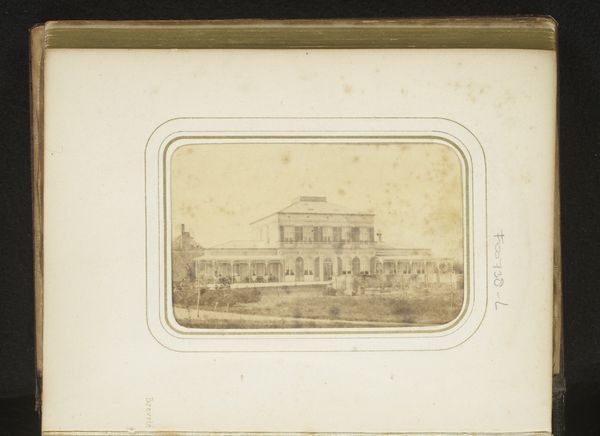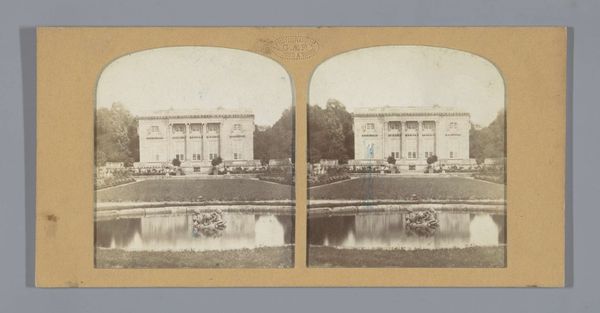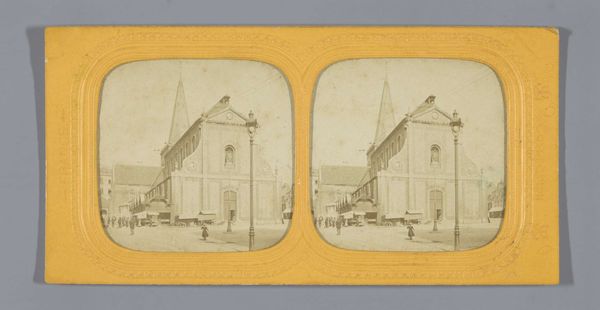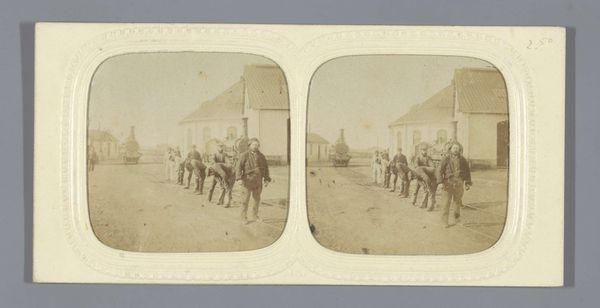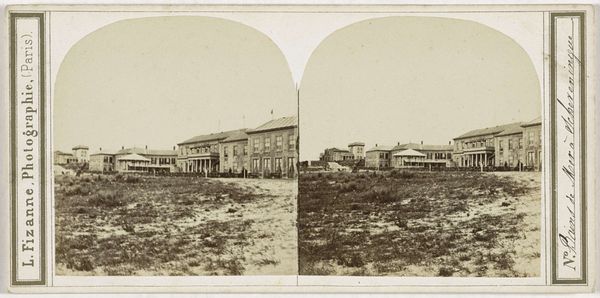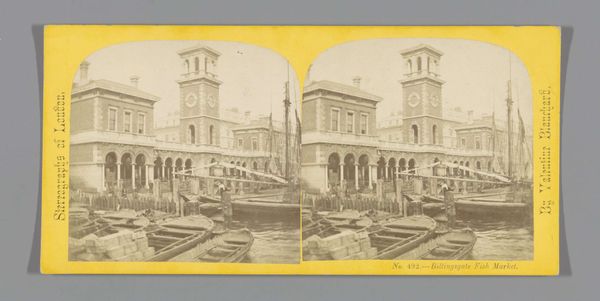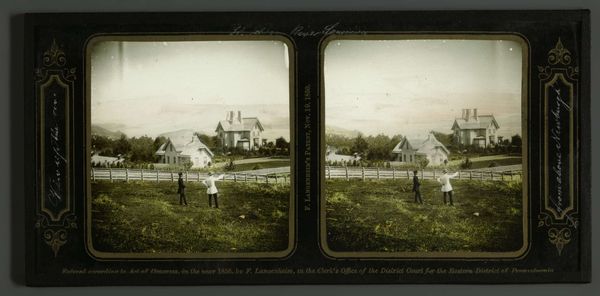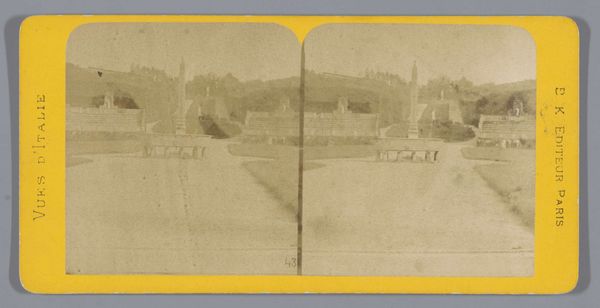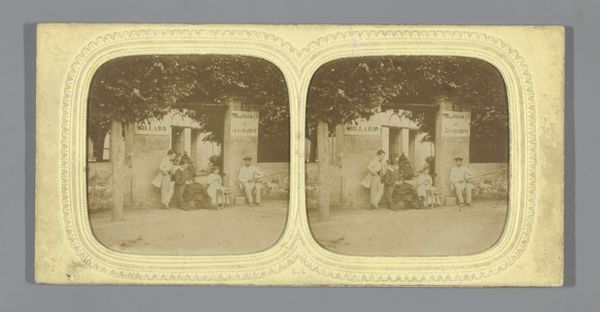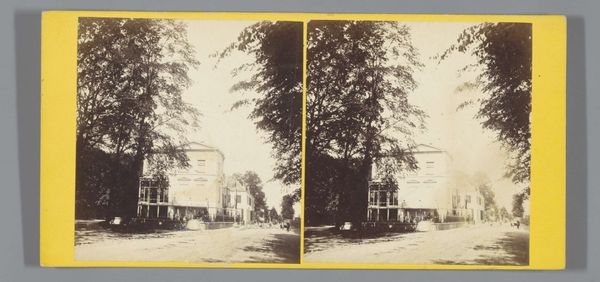
Dimensions: height 86 mm, width 174 mm
Copyright: Rijks Museum: Open Domain
Editor: Here we have "Anglicaanse kerk in Valletta, Malta," created sometime between 1855 and 1875, utilizing an albumen print technique. The image presents a symmetrical, almost sterile, cityscape dominated by the church. I'm curious, what elements of its production or historical context do you find most compelling? Curator: I find the albumen print itself fascinating. It's crucial to understand it not merely as a 'window' onto a scene but as a material object produced under specific labor conditions. Consider the resources: the silver for the light-sensitive emulsion, the egg whites used to coat the paper, the very specific chemical processes. Who had access to these resources, and what does that tell us about the social context of photography at the time? Editor: So you're saying the materiality of the print reflects a certain social structure? Curator: Precisely. The clean lines of the Neoclassical architecture shown, indicative of colonial ambitions, contrast starkly with the laborious process required to create the image. Think of the photographers, the technicians, potentially working under harsh conditions, their labor embedded in every shimmering tone. Even the seemingly straightforward documentation of architecture served specific interests tied to colonial power and wealth. How might our perception change knowing about these implications of both subject and process? Editor: I see now how the image’s creation isn't a neutral act, but deeply intertwined with material resources and social hierarchies of the time. I never really thought about all of the work that went into creating a single photographic print. Curator: Exactly, and consider how this object would have circulated—who could afford it, how did it shape perceptions of Malta? Understanding these details grounds the aesthetic experience in a concrete reality, pushing us to see art not just as an image but as a product of complex relationships.
Comments
No comments
Be the first to comment and join the conversation on the ultimate creative platform.

